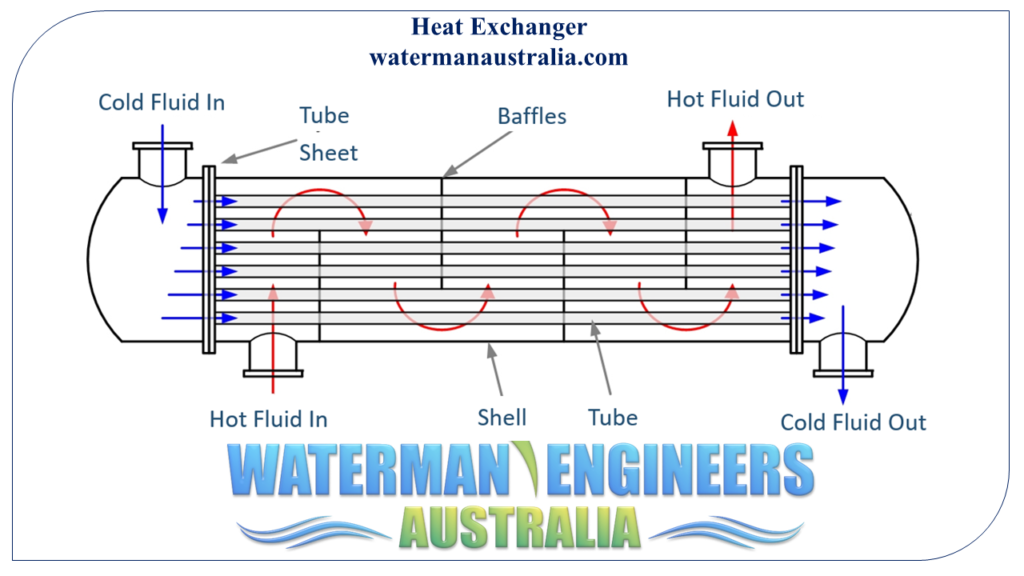
A heat exchanger is a device that allows for the transmission of heat between two different media without any physical contact between them. Heat exchangers work on the idea that thermal energy can be transferred from a hot fluid to a cold fluid. Heat exchangers provide for precise temperature regulation, improving energy efficiency and system functionality by transferring heat between two fluids.
Power plants, chemical plants, HVAC (heating, ventilation, and air conditioning) systems, supermarkets, and many more all employ heat exchangers. They can be found in commonplace home products like air conditioners and water heaters.
In this article, we'll learn about heat exchangers, what they are, how they work, and the different kinds there are. The article also details the common uses and factors to consider when choosing a heat exchanger.
Following introducing The essential heat transfer ideas and parameters, an summary of design and style methodologies is talked about. Subsequently, information of style and design idea of varied varieties of exchangers are offered. The first edition established itself since the typical solitary-volume textual content on the subject. The next edition preserves a longtime in-depth method but demonstrates some new technological developments relevant to style for producing compact heat exchangers, such as novel 3-D printing ways to heat exchanger design and style. Audience of the 2nd version of Fundamentals of Heat Exchanger Style will likely obtain:
Additionally, Mitsubishi Electrical utilised proprietary Investigation know-how to develop a whole new fin design and style that considerably improves drainage, reducing the problem of melted frost h2o freezing to the fins and reducing air contact with the heat exchanger, which decreases efficiency.
Subcoolers are additional heat exchangers that help improve the performance within your refrigeration process by cooling the refrigerant further before it enters the evaporator. Allow me to share the leading sorts of subcoolers:
Dr. Nitsche's comprehensive experience consists of designing and making distillation models, tank farms, stirred tank reactor facilities, air purification models and absorption and stripping models for a variety of applications.
The enthusiast should have plenty of power to beat the stress fall and sustain the specified air flow amount. HTRI Xace may be used being a guideline, but usually the enthusiast producer has their own application.
is one. For this reason, the exchanger behaviour is impartial of the specific configuration. These could well be the situation if among the list of fluids underwent a stage transform.
A lower or even Designing of heat exchanger manufacturer zero corrosion allowance is taken under consideration for tubes as They can be deemed a replaceable component from the exchanger. Tube thicknesses indicated within the TEMA requirements have two elements: one towards energy and one other towards corrosion.
A heat exchanger utilizes a number of materials due to the various natures, states, temperatures, and contents of corrosive factors in the fluids on shell and tube sides.
Log-mean temperature variance ΔTlm is computed less than assumption of counter move situations. Heat transfer level is
While the ductwork isn’t just a Component of both a fuel or electric powered furnace, it truly is an essential ingredient that enables your own home to generally be appropriately heated.
The shell and tube exchanger generally contains quite a few connected components, a few of that are also used in the development of other types of exchangers.
In a nutshell, the fuel valve controls the gas that enters a furnace, including shutting it off when You will find there's failure with a safety change.
Once the influence element exceeds the TEMA restrictions, impingement security is necessary. The TEMA requirements specify diverse rho-v-2 boundaries for erosive fluids and nonerosive fluids.
Fundamentals of Heat Exchanger Style and design is ideal for training engineers, and for Superior undergraduate and graduate pupils in mechanical and aerospace engineering, Vitality engineering, and linked topics.